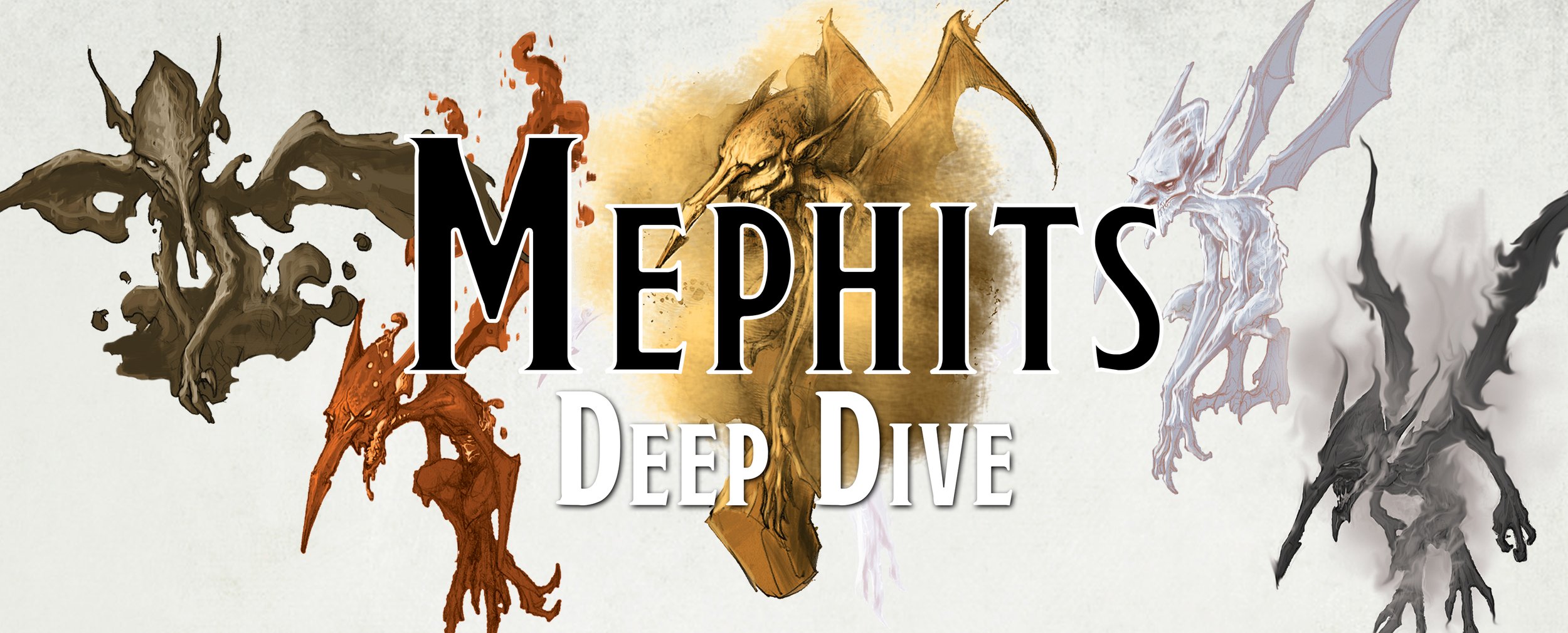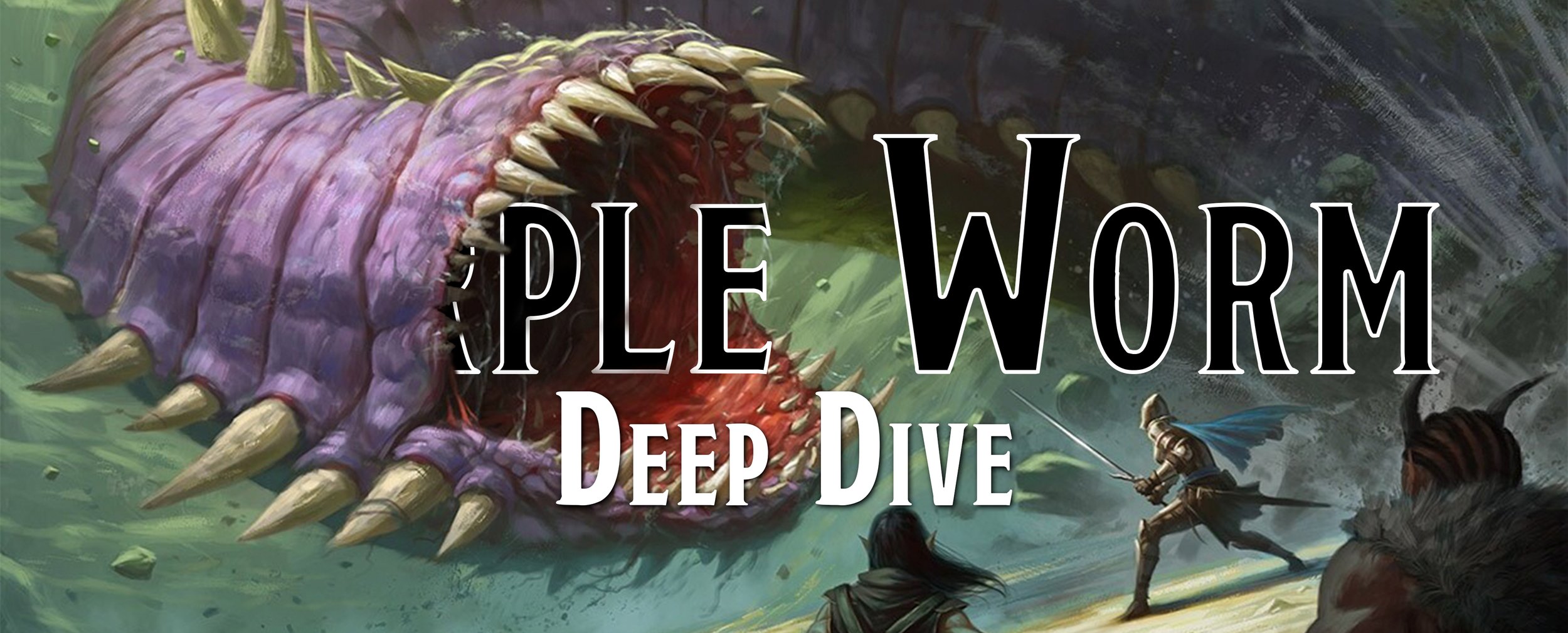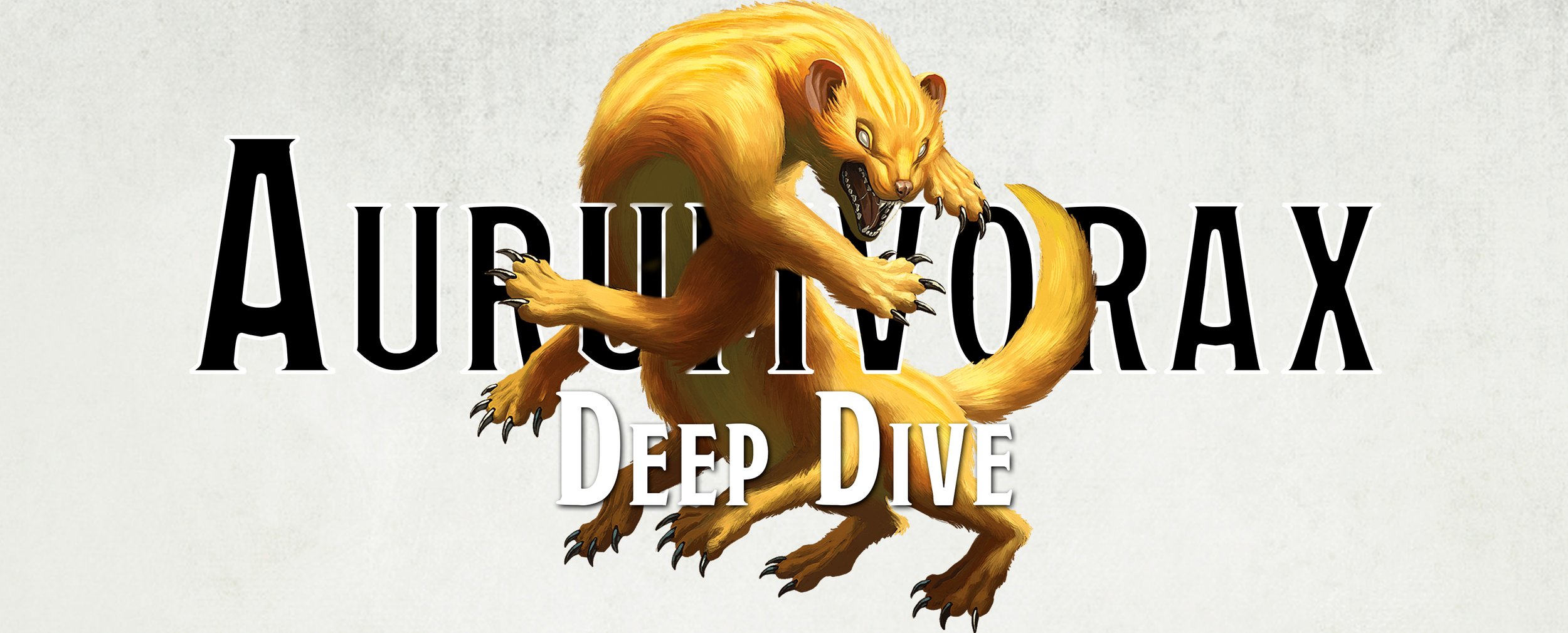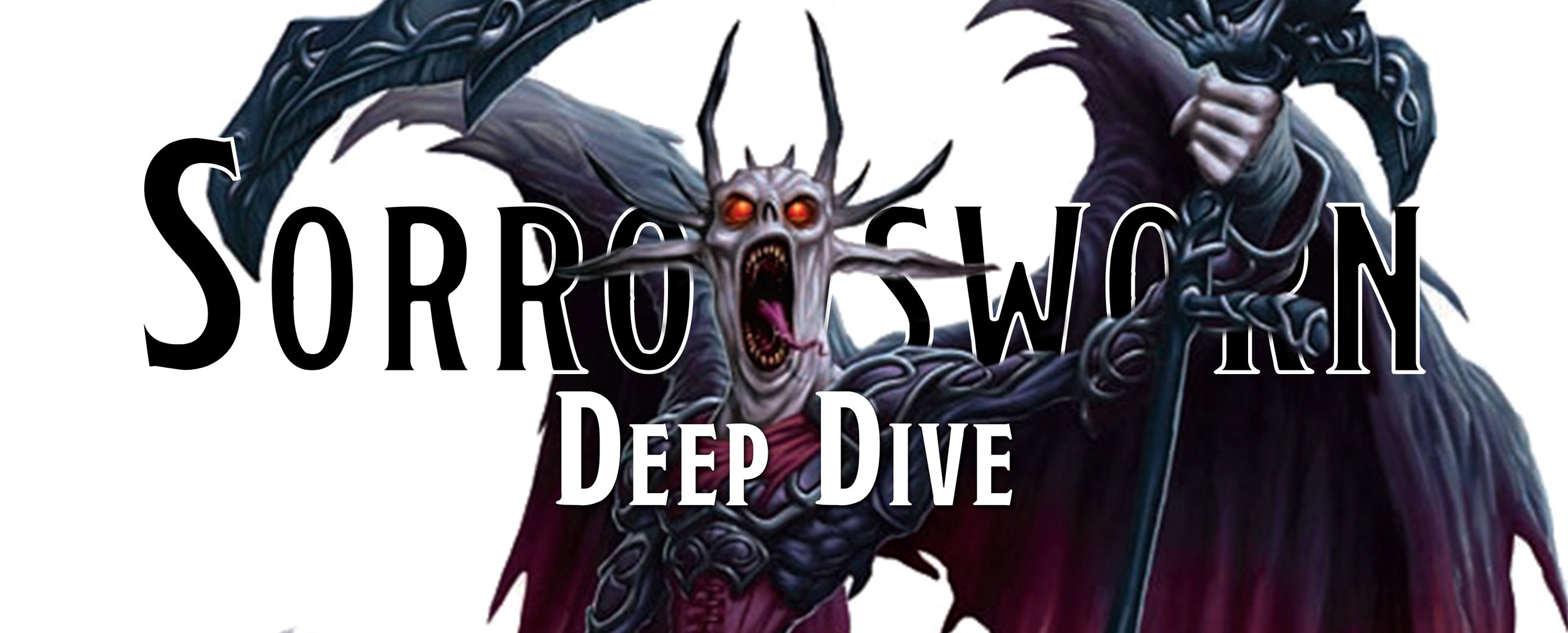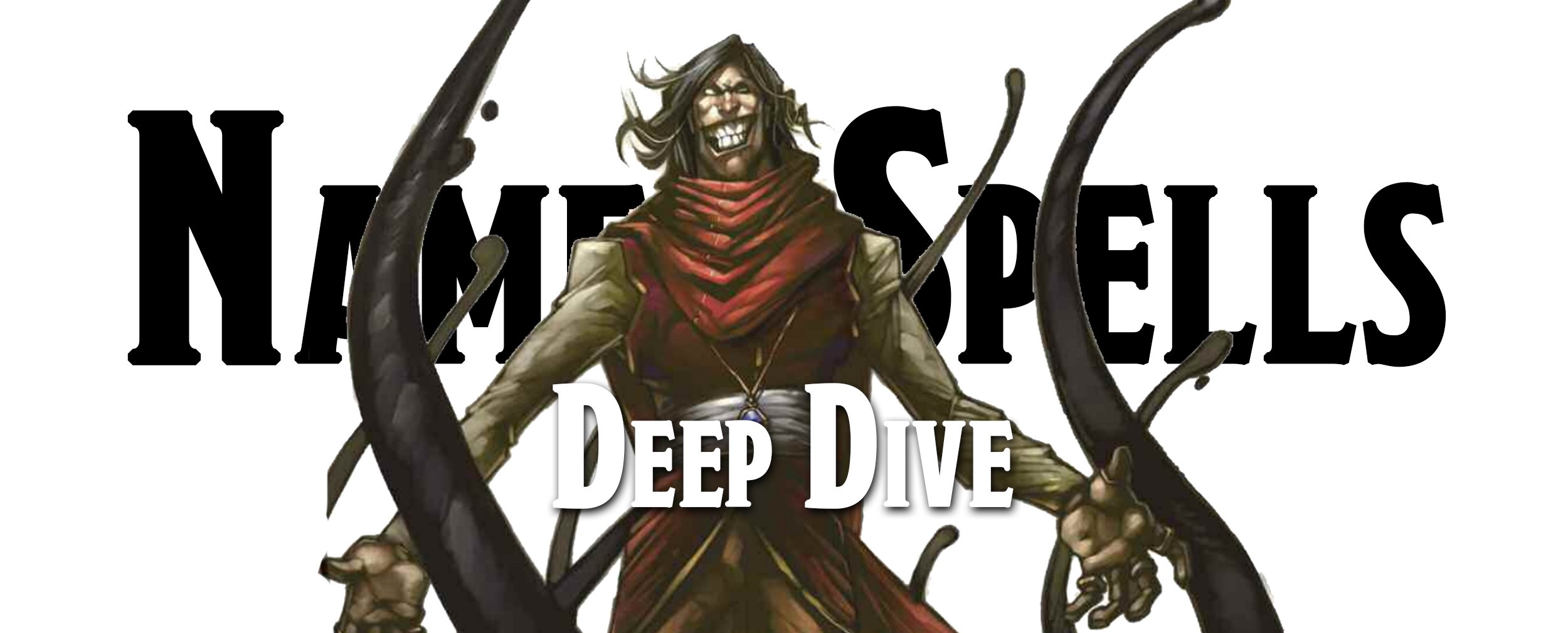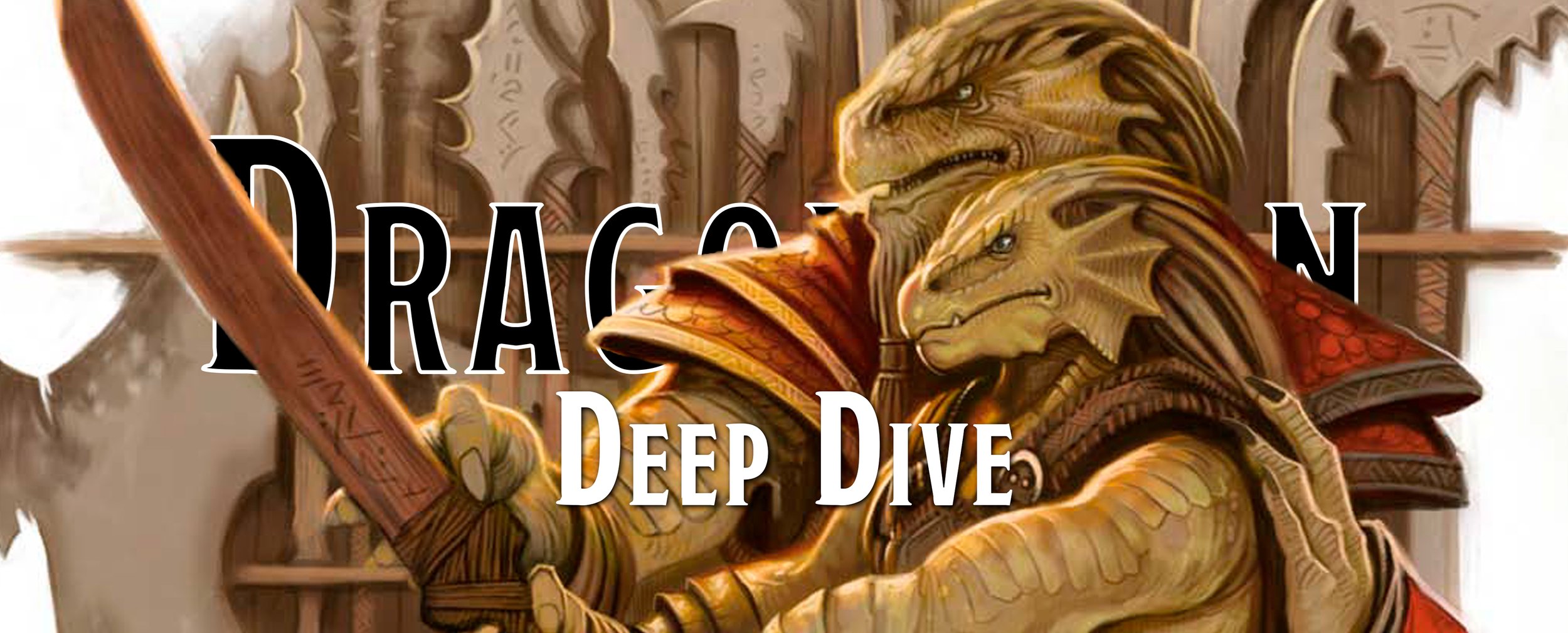Deep Dive - The Grung
There are quite a few different frog-like humanoids or monsters you could encounter out in the swamps, but how many of them are brightly colored and ready to give you some strange poisons that can cause all sorts of odd reactions, like sudden death? While some may confuse the Grung for other creatures, like bullywugs and grippli, we suggest that regardless of who you think you are being attacked by, your cleric or druid has the protection from poison spell prepared just in case. So let’s dive in and take a look at the anti-Kermit, the Grung.
2e - Grung
Climate/Terrain: Tropical and subtropical
Frequency: Uncommon
Organization: Tribal
Activity Cycle: Day
Diet: Carnivore
Intelligence: Average (8-10)
Treasure: C
Alignment: Lawful evil
No. Appearing: 4-48
Armor Class: 7
Movement: 9, Sw 12
Hit Dice: 1 + 2
THAC0: 19
No. of Attacks: 2
Damage/Attack: 1-3 (bite)/1-6 (weapon)
Special Attacks: Poison
Special Defenses: Nil
Magic Resistance: Nil
Size: S (3' tall)
Morale: Elite (13)
XP Value: Normal: 120; Tadpole: 7; Juvenile: 35; Shaman, 1st or 2nd: 175; Shaman, 3rd: 270
Monstrous Compendium Greyhawk Adventures Appendix, 1990 TSR Inc.
We first find the Grung in the Monstrous Compendium Greyhawk Adventures Appendix (1990) and we are going to bet most adventurers don’t want to find them or be anywhere near them. It isn’t because they are horrific in appearance, especially if you can stomach the sight of a bullywug. The reason why no one wants to find these frog-humanoids is that the chances of you dying from poison are incredibly high. Not only do they poison their weapons with the slime from their skin, but even the saliva left behind from their bites can poison you. If you’re unlucky, that same poison will kill you. The poison is quite potent, meaning that you get a single save once you are hit by a weapon or bit by a Grung. On a failed save, you will die in four rounds, or six rounds if they bit you as the saliva slightly dilutes their poison, granting you a small bonus to saving against it. Try and look on the bright side; it’s better than instantaneous death.
There are a wide variety of monsters in this edition that can just kill you with their poison, surely saving against poison isn’t that hard. Well if we look at the saving throws chart in the revised Player’s Handbook (1995), we can see that the second column for Paralyzation, Poison, or Death Magic lists different values for each class and level. This column informs the player what they have to roll on a d20 to save against an effect, and your character gets better chances as they get stronger. This means that a level 1 warrior must roll a 14 or better while a priest only has to roll a 10 or better. What this ultimately means is that you and your party of stalwart adventurers are just a series of bad rolls away from permanently dying, which is very likely if it is just four of you against 26 Grungs, you know a normal war party of them. If you had planned on killing a few Grung and using their poison against your enemies, don’t bother as it loses its potency after 10 minutes once it is exposed to air, even for just a split second.
Player’s Handbook, 1995 TSR Inc.
But let’s assume that you aren’t scared of a bit of instadeath poison. What else awaits? Grungs appear as three-foot-tall frog-humanoids with the lower body of a large toad or frog and an upper body that, while frog-like, is more humanoid. Evolution is a funny thing, for the Grung are surprisingly intelligent. They have opposable thumbs, strong arms, a kind of human-ish-like head, and they walk around on their back legs. They cannot leap incredible distances like a frog, but they do walk about with little hops and skips. They are also more intelligent than frogs, and even most bullywugs, but lose out to grippli, another frog-humanoid race, who are highly intelligent. Another thing they lose is their prehensile tongue, but they make up for it by having razor-sharp teeth, which is probably why they are strict carnivores who are happy to eat rats, humans, and even other Grung.
If you do get in a fight with Grung, it’s probably because they ambushed you in their swamp. Warbands of Grung are constantly fighting in the swamp, attacking other tribes and anyone who happens to wander into their territory. They don’t negotiate, take prisoners, or accept surrender. Why would they when they could just kill you and bring your body back to be feasted on by the rest of their tribe? They are so focused on fighting that it is a rule, not an exception, to find tribes constantly at war with other tribes, each trying to eradicate the other and claim their territory within the swamp.
If for whatever reason, you can observe a Grung tribe without dying from the poisoned water they pollute due to their natural skin muck or from roving warbands, you’ll find that Grung society is pretty brutal. Settlements or crude shelters are always adjacent to open water, where their young, in the form of large tadpoles, live for three months before they absorb their tails and develop limbs, whereupon they join the tribe. In six months, they’ll reach full maturity and be a part of the Grung tribe and all that entails.
Rising through the ranks of Grungs is always through duels to the death, with the victor gaining the title of whoever they killed. This means that the strongest fighter becomes the de facto of the tribe, and all war chiefs are female, meaning that lady Grungs are the best fighters within the tribe. Of course, maybe you prefer to commune with nature more, in which case you could be a shaman, with the most powerful shaman always being female, where your magic is focused on the spheres of Animals, Combat, the reverse of Healing, and Plants. Unfortunately, these shamans aren’t going to be very powerful, with the strongest capable of only casting up to 2nd-level spells.
It’s not all bad if you do want to fight Grungs, though you are limited to what, or who, you can use if you want to avoid your allies dying from poison. You can dry them out, as Grungs need to moisten their skin several times a day or dry out and die. Also, Grungs have few natural predators thanks to how poisonous they are, but you can enlist the help of many different types of poisonous snakes who happily snack on Grungs since they are immune to the Grung’s poison. Luckily, Grungs also don’t wear armor and have little other defenses other than a mouth full of teeth and poisonous skin, and thus are susceptible to just being stabbed with a sword or hit with a fireball.
5e - Grung
Small humanoid (grung), lawful evil
Armor Class 12
Hit Points 11 (2d6 + 4)
Speed 25 ft., climb 25 ft.
Str 7(−2) Dex 14(+2) Con 15(+2) Int 10(+0) Wis 11(+0) Cha 10(+0)
Saving Throws Dex +4
Skills Athletics +2, Perception +2, Stealth +4, Survival +2
Damage Immunities poison
Condition Immunities poisoned
Senses passive Perception 12
Languages Grung
Challenge 1/4 (50 XP)
Amphibious. The grung can breathe air and water.
Poisonous Skin. Any creature that grapples the grung or otherwise comes into direct contact with the grung’s skin must succeed on a DC 12 Constitution saving throw or become poisoned for 1 minute. A poisoned creature no longer in direct contact with the grung can repeat the saving throw at the end of each of its turns, ending the effect on itself on a success.
Standing Leap. The grung’s long jump is up to 25 feet and its high jump is up to 15 feet, with or without a running start.
Dagger. Melee or Ranged Weapon Attack: +4 to hit, reach 5 ft. or range 20/60 ft., one target. Hit: 4 (1d4 + 2) piercing damage, and the target must succeed on a DC 12 Constitution saving throw or take 5 (2d4) poison damage.
Volo’s Guide to Monsters, 2016 WotC
It only takes 26 years, but the Grung finally reappears with the release of Volo’s Guide to Monsters (2016). They are still aggressive frog-humanoids, but now they have a bit of ego in them, assuming they are better than pretty much everyone else. This edition features a few changes, first off they look more like small frogs than the weird frog blobs from before, in addition, they can leap and hop just like a real frog, clearing 25 feet in a single bound.
Another major change in this edition is the introduction of a hierarchy within Grung tribes based on what color a Grung is. When Grungs are born, they all appear as grayish and gross tadpoles, after three months they absorb their tails, and over the next six months, their skin begins changing to their class colors and they get more frog-like. Each Grung is born, based on their parents, with a specific color, this color dictates their spot in the hierarchy and what job they’ll have when they get older. The ranks, starting with the lowest, are green, blue, purple, red, orange, and gold.
Green Grungs are basic warriors and laborers, while the blue are artisans. Purple Grungs oversee those two groups, acting as administrators. Red Grungs are the first ones to get any respect from the higher-ups in Grung society, probably because they are typically magical, or at least scholarly, and use a stronger stat block to represent them, the Grung Wildling. This stat block gives them up to 3rd-level ranger spells, and are given spells to help them survive the jungle… and the jump spell because, and this is an assumption on our part, hops are life.
Above them are the orange Grungs, who are elite warriors that protect the highest in their caste system, the gold Grungs. Gold Grungs are seen as the sovereign and rule through their strength, which is why orange and gold Grungs get a stronger stat block than the others, the Grung Elite Warrior. This stat block gives them a new ability Mesmerizing Chirr which allows them to stun creatures within 15 feet of them that can hear them. Luckily for Grungs, they are immune to its chirr, though we assume that the lower caste Grungs brace for punishment if they hear it from their rulers.
Now, many might see this hierarchy as being rigid and a horrible thing for the green Grung, and it is, but there is a way for Grung to increase their station within the tribe. They just have to do great feats for the tribe, at which point, if the sovereign in charge of the tribe is amenable, then they undergo a magical ritual that will change their color for them and all of their future children. They are immediately treated as a member of the higher caste and get all the rights of that caste, which we suspect is largely just them being mean and bossing around anyone below them in the caste.
One Grung Above, 2017 WotC
Not only do the Grungs of different castes have different jobs, but even their poison has the potential to do different things. First off, we should clarify that the basic poison they secrete has two normal effects. When it is used on a weapon, it deals only 2d4 extra damage as opposed to you just dropping dead, which is way better for you as an adventurer, but a lot worse for the Grung. The second thing is that if you touch their skin secretion, you will become poisoned unless you can succeed on a Constitution saving throw. While poisoned, you have disadvantage on attack rolls and ability checks, meaning it is going to be a lot harder to hit these hoppity frogs.
You may have noticed that they no longer bite, instead, they rely on daggers and shortbows to kill off intruders into their swamp. But, as we mentioned before, their poison can do different things as a variant rule. Depending on what color of Grung you gain the poisoned condition from, it will affect you in different ways. Strictly speaking, these poisons seem a bit more magical than poison-y, but we aren’t toxicologists. If you are infected by a green Grung’s poison, you can’t move except to climb or make standing jumps. If you fly, you can’t take any actions or reactions unless you land. Again, we aren’t entirely sure how a poison knows when you are climbing as opposed to walking, but maybe these Grungs secrete magic poison.
Blue Grung poison will force you to shout loudly at the start and end of your turn. Purple poison will force you to soak yourself in liquid or mud, forcing you to use all of your actions and movement to reach a body of liquid and just mud bathe like a happy hog. After that is the red Grung poison which forces you to eat all food within reach, using your action every round to eat any food you can find. Orange poison gives you the frightened condition, but instead of being scared by Grungs, you are scared by your allies, and we get it. Murderhobos the lot of them. The final type of poison comes from the gold Grung and makes you charmed to Grungs and you can now speak the language of Grung… somehow.
Why these poisons all do different things, we aren’t sure, but we bet it helps them quite a bit when they are trying to gather up slaves. They keep lots of slaves and give them small amounts of poison every day to ensure that the slaves remain lethargic and compliant as they don’t want an uprising, they just want someone else to boss around. If a person goes too long being exposed to this mild poison, then after a while they become a shell of their former self and only magic can ever restore their senses.
Tomb of Annihilation, 2017 WotC
The Grung appear in Tomb of Annihilation (2017), and while it isn’t a major appearance, they do get to be more than just random encounters. Most of the Grung encountered in this adventure are focused on summoning forth the goddess Nangnang, who seems to be a Grung deity. In truth, Nangnang is a trickster of sorts and these Grung may not fully realize what they are trying to accomplish or the consequences of it. Brave adventuring parties can throw themselves into the politics of the Grung tribes, though they better recognize that Grungs see themselves as far above outsiders and treat the gold Grungs with proper respect.
As a result of their being featured in Tomb of Annihilation, the unofficial text One Grung Above (2017) is published. Written by Christopher Lindsay, the author and self-appointed director of The Grung Preservation Society, it primarily serves as the vehicle for the stat blocks of the Grungs played in the Stream of Annihilation game. One can find the Grung characters played by Matt Colville (b’Loop), Mark Hulmes (b’Lip), Adam Koebel (b’Lahp), and Nadja Otikor (c’Ahbülos). At the end of the book there are character traits if you wish to play as a Grung. Though the Grung is not allowed in any Adventurer’s League games, and campaigns where your DM is a frog hater as it is not an ‘official’ book.
The last mention of the Grung comes in the Mordenkainen Presents: Monsters of the Multiverse (2022), and much of their lore is swept away. The book gets rid of all mentions of their color-based caste system, which we understand has some rather problematic elements in there, their reputation for taking slaves, their normal lawful evil alignment, any mention of them being aggressive, and simply lists normal duties that a grung with that particular stat block would have, ignoring anything about a Grung’s particular color. We get wanting to remove lore that might not fit every Grung society in existence, as they might not all follow such a strict color hierarchy, but it would’ve been nice if the Grung were actually given new lore that was a bit more generic instead of just copying the weird poison variants each color has as well as a few minor updates to stat blocks. Right now, there isn’t much to the Grung to go off, which is a shame as we’ve grown to love these adorable, highly poisonous, frogs.
There are a lot of different frog-humanoids and frog-monsters out there, unfortunately the Grung seem to get little of the spotlight unlike the grippli, bullywug, froghemoth, and others. But, where they might lack in lots of content, they make up for it in murderous and poisonous spunk. While these 3-foot tall frogs may not seem the toughest out in the swamp, you better be careful as they pack a poisonous wallop.



























